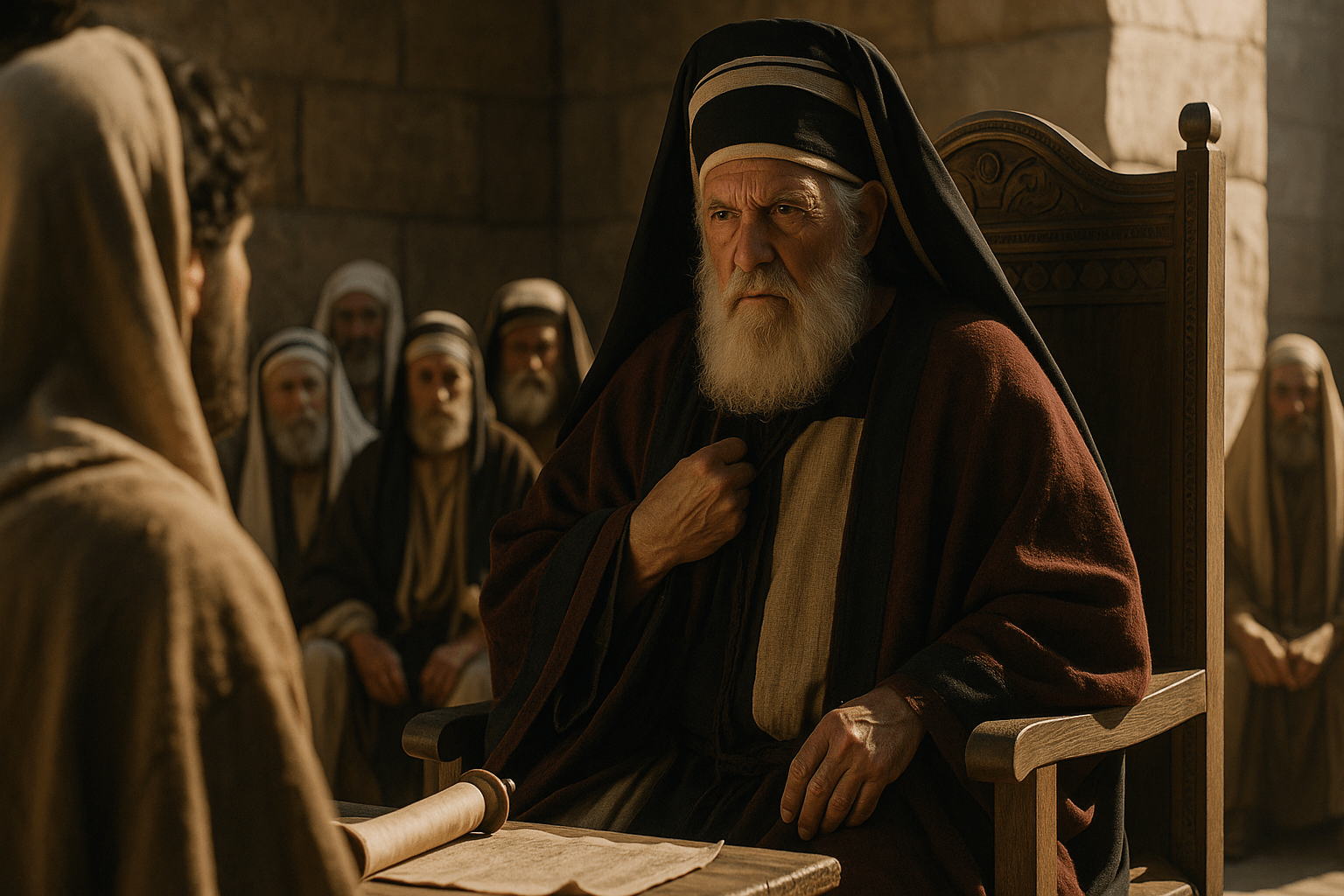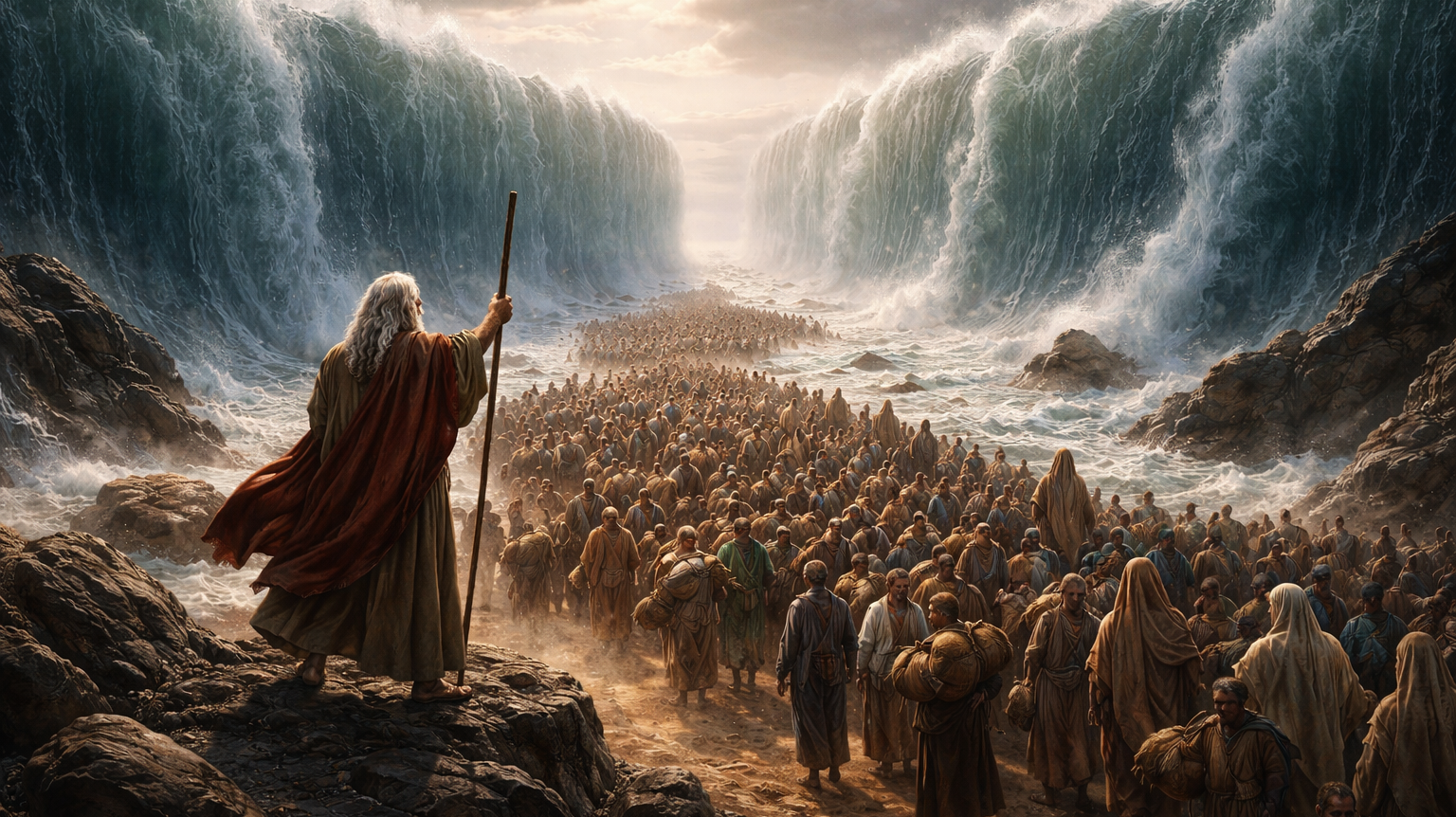Caiaphas was the high priest during one of the most critical periods in the New Testament—the final days of Jesus’ life. He was a key figure in the arrest, trial, and crucifixion of Jesus Christ. While often remembered for his opposition to the Gospel, his story also reveals deeper truths about prophecy, leadership, and the intersection of faith and politics.
1. Caiaphas Was the Jewish High Priest During Jesus’ Ministry
Caiaphas served as high priest from A.D. 18 to 36, appointed under Roman rule. His office made him the most powerful religious leader in Jerusalem at the time of Jesus’ trial and crucifixion.
John 18:13 – “And led him away to Annas first; for he was father in law to Caiaphas, which was the high priest that same year.”
Matthew 26:3 – “Then assembled together the chief priests, and the scribes, and the elders of the people, unto the palace of the high priest, who was called Caiaphas.”
2. He Was Appointed by Roman Authorities
Unlike earlier priests, Caiaphas was placed in power by Valerius Gratus, the Roman governor before Pontius Pilate. This political appointment meant his loyalty was more to Rome than to Jewish tradition.
John 11:47–48 – “Then gathered the chief priests and the Pharisees a council, and said, What do we? for this man doeth many miracles. If we let him thus alone, all men will believe on him: and the Romans shall come and take away both our place and nation.”
3. He Was the Son-in-Law of Annas
Caiaphas married into the powerful priestly family of Annas, who had previously served as high priest. Though Annas no longer held the official title, he still wielded major influence behind the scenes.
Luke 3:2 – “Annas and Caiaphas being the high priests, the word of God came unto John the son of Zacharias in the wilderness.”
Acts 4:6 – “And Annas the high priest, and Caiaphas, and John, and Alexander, and as many as were of the kindred of the high priest, were gathered together at Jerusalem.”
4. He Led the Plot to Kill Jesus
Caiaphas saw Jesus as a threat to the fragile peace with Rome. He gathered the Sanhedrin to conspire against Jesus and decided it would be better for one man to die than the whole nation.
John 11:49–50 – “And one of them, named Caiaphas, being the high priest that same year, said unto them, Ye know nothing at all, nor consider that it is expedient for us, that one man should die for the people, and that the whole nation perish not.”
5. His Words Became Prophetic
Though Caiaphas spoke with political intent, his words were used by God to speak prophetically about Jesus’ atoning death—not just for Israel but for all God's children.
John 11:51–52 – “And this spake he not of himself: but being high priest that year, he prophesied that Jesus should die for that nation; and not for that nation only, but that also he should gather together in one the children of God that were scattered abroad.”
6. He Presided Over Jesus' Trial
Caiaphas oversaw the sham trial that condemned Jesus. It took place at night, included false witnesses, and violated Jewish legal customs.
Matthew 26:59–60 – “Now the chief priests, and elders, and all the council, sought false witness against Jesus, to put him to death; but found none: yea, though many false witnesses came, yet found they none. At the last came two false witnesses.”
Mark 14:61–62 – “But he held his peace, and answered nothing. Again the high priest asked him, and said unto him, Art thou the Christ, the Son of the Blessed? And Jesus said, I am…”
7. He Tore His Robes in Anger
In Jewish tradition, tearing one's robe showed grief or outrage. When Jesus admitted He was the Son of God, Caiaphas used this act to charge Him with blasphemy.
Matthew 26:65–66 – “Then the high priest rent his clothes, saying, He hath spoken blasphemy; what further need have we of witnesses? Behold, now ye have heard his blasphemy. What think ye? They answered and said, He is guilty of death.”
8. He Worked With Pilate to Have Jesus Crucified
Since the Jews couldn't lawfully execute someone under Roman law, Caiaphas and the Sanhedrin handed Jesus over to the Roman governor Pilate.
John 18:28 – “Then led they Jesus from Caiaphas unto the hall of judgment: and it was early…”
Luke 23:1–2 – “And the whole multitude of them arose, and led him unto Pilate. And they began to accuse him, saying, We found this fellow perverting the nation…”
9. He Likely Opposed the Early Church
Caiaphas was still active as high priest when Peter and John were arrested for preaching about the resurrection. He continued trying to silence the message of Jesus.
Acts 4:6–7 – “And Annas the high priest, and Caiaphas... were gathered together at Jerusalem. And when they had set them in the midst, they asked, By what power, or by what name, have ye done this?”
Acts 5:28 – “Did not we straitly command you that ye should not teach in this name? and, behold, ye have filled Jerusalem with your doctrine…”
10. Archaeologists May Have Found His Ossuary
In 1990, a limestone ossuary inscribed “Joseph son of Caiaphas” was found in a burial cave in Jerusalem. Many believe it belonged to the very high priest mentioned in the Gospels.
Though not confirmed beyond doubt, the find offers historical weight to the biblical account of Caiaphas as a real, powerful figure during Jesus’ lifetime.
Summary Table
| Fact | Description | Bible Reference |
|---|---|---|
| 1 | High Priest During Jesus’ Ministry | John 18:13; Matthew 26:3 |
| 2 | Appointed by Romans | John 11:47–48 |
| 3 | Son-in-law of Annas | Luke 3:2; Acts 4:6 |
| 4 | Led Plot to Kill Jesus | John 11:49–50 |
| 5 | Spoke Prophecy Unknowingly | John 11:51–52 |
| 6 | Presided Over Jesus’ Trial | Matthew 26:59–60; Mark 14:61–62 |
| 7 | Tore His Robes | Matthew 26:65–66 |
| 8 | Worked With Pilate | John 18:28; Luke 23:1–2 |
| 9 | Opposed the Apostles | Acts 4:6–7; Acts 5:28 |
| 10 | Possible Ossuary Found | Archaeological discovery |
























